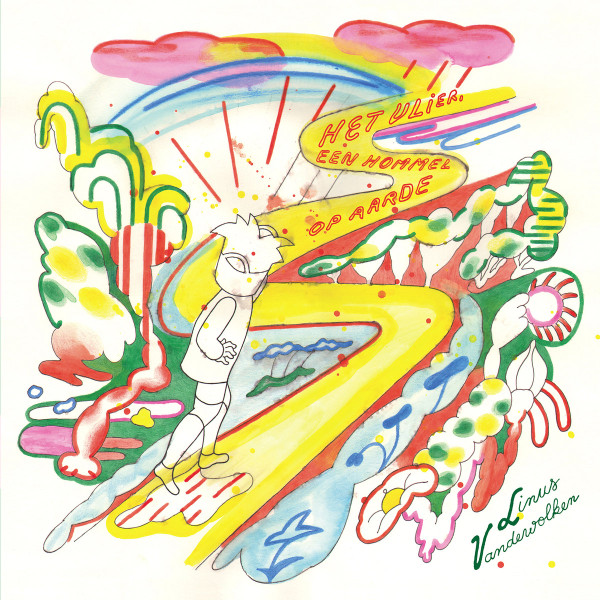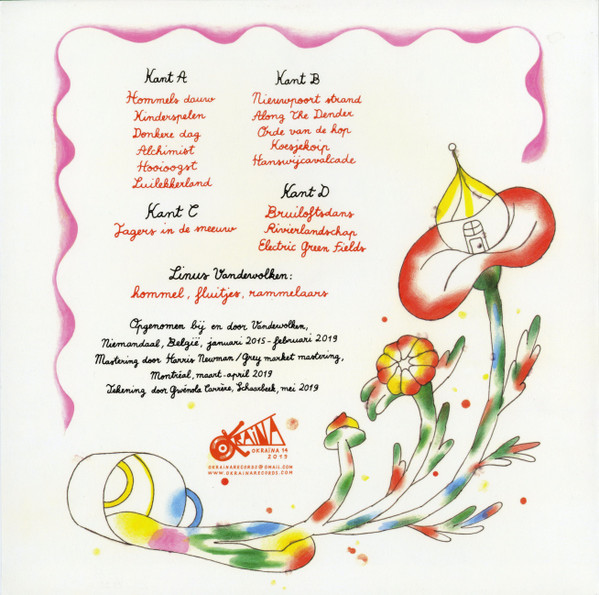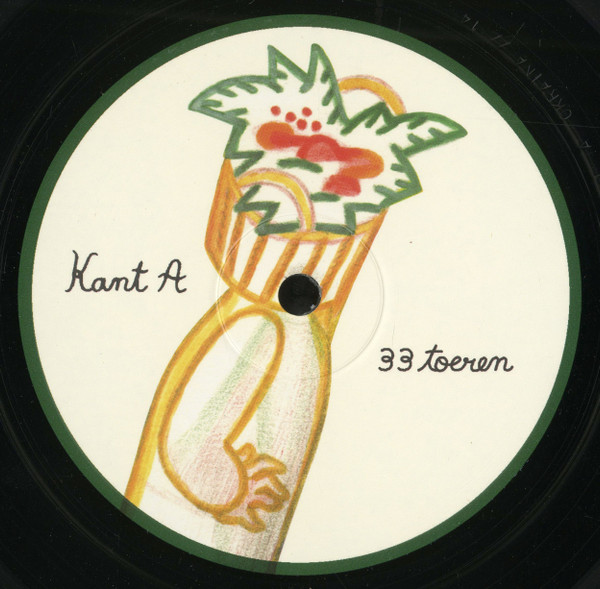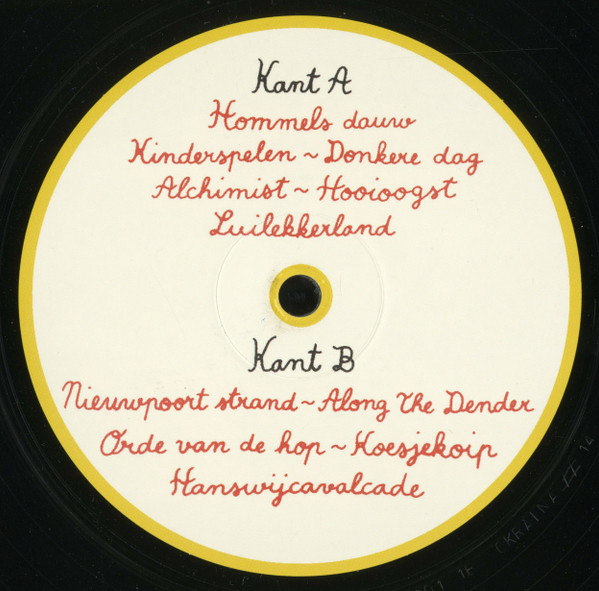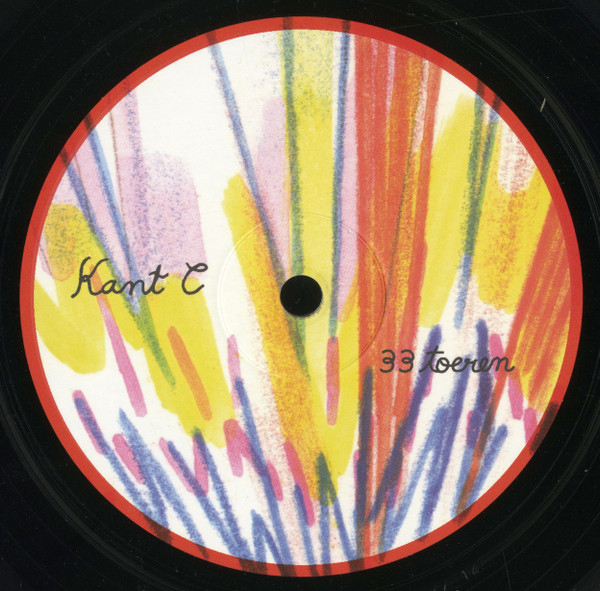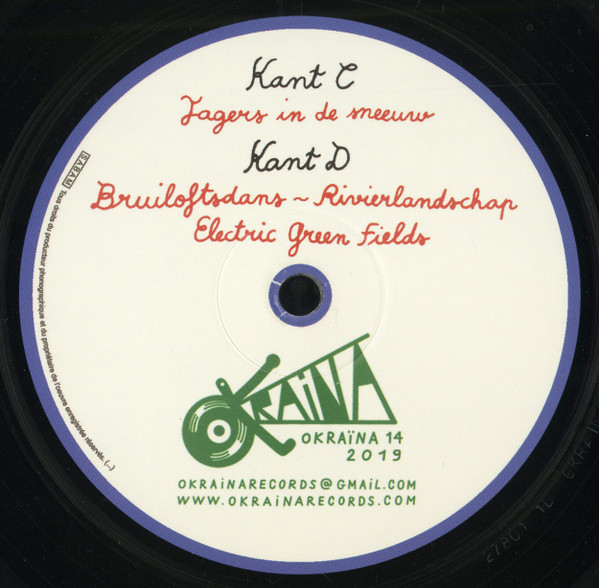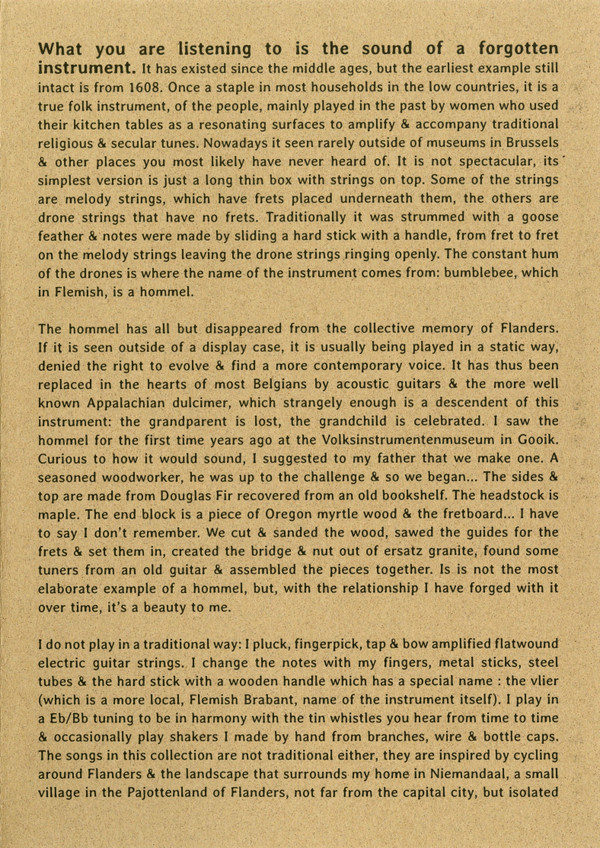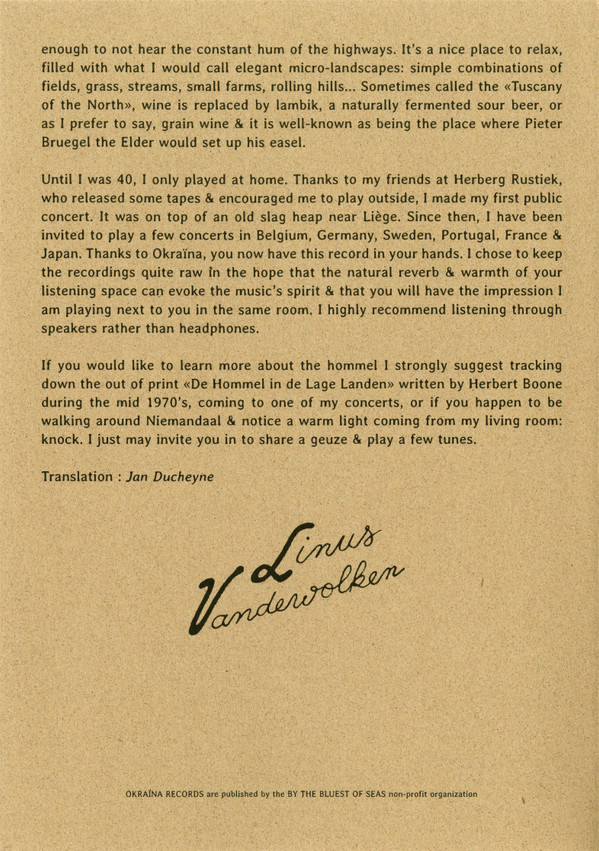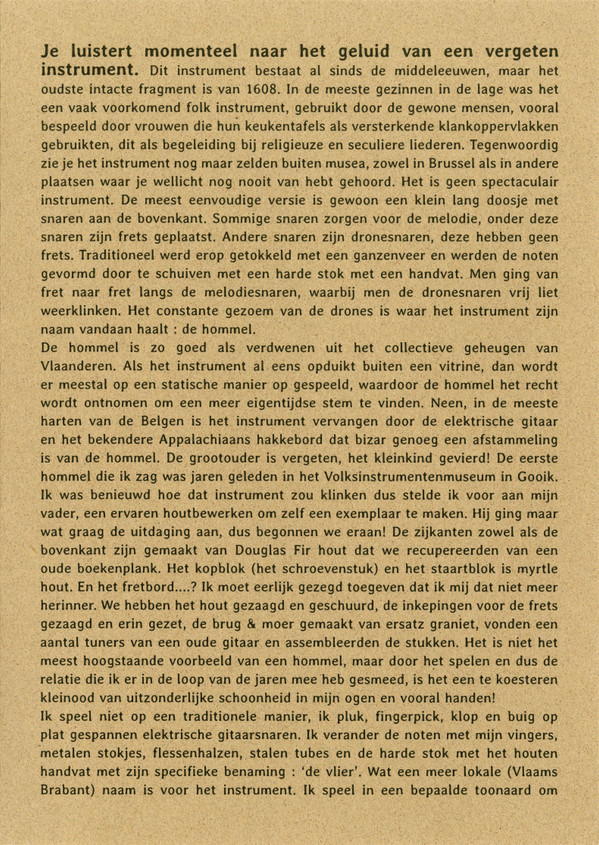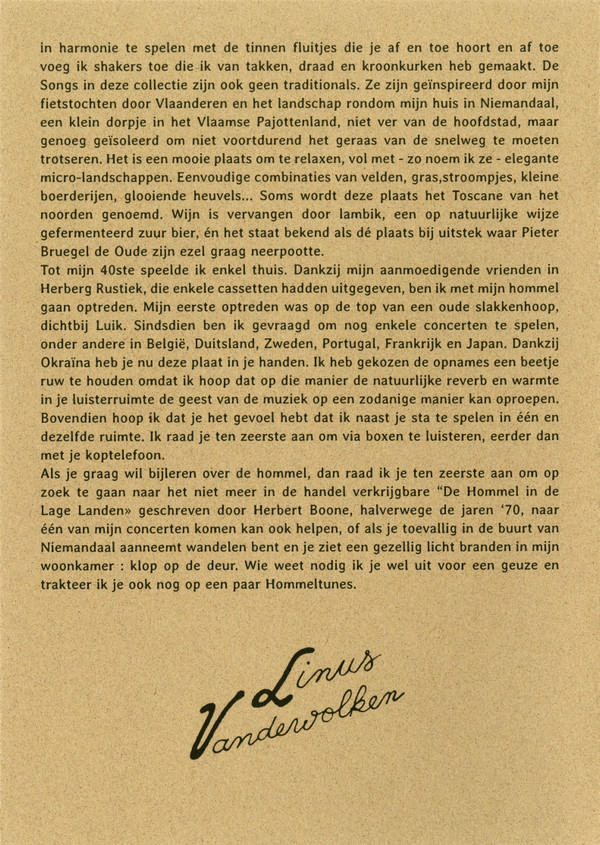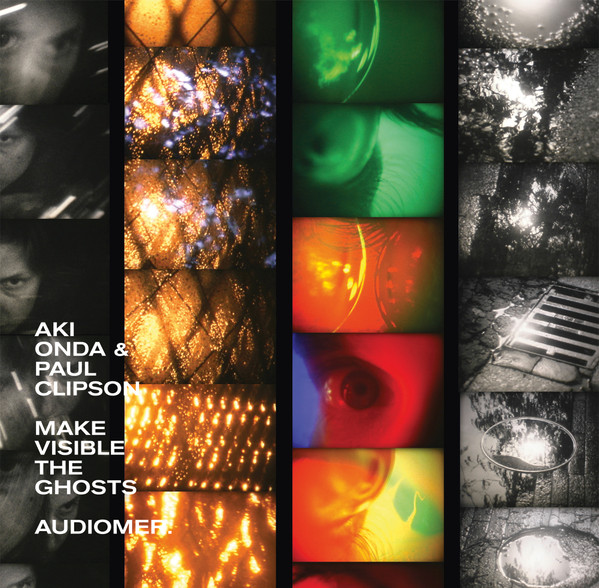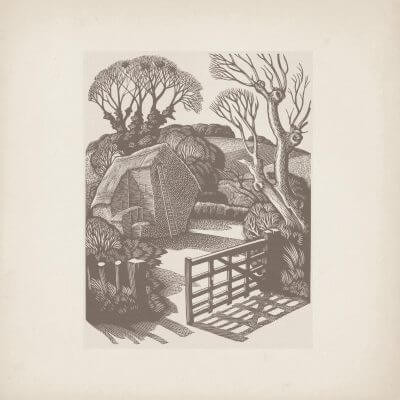By continuing your navigation on this website, you accept the use of cookies for statistical purposes.
Linus Vandewolken
Het Vlier, Een Hommel Op Aarde
" What you are listening to is the sound of a forgotten instrument. It has existed since the middle ages, but the earliest example still intact is from 1608. Once a staple in most households in the low countries, it is a true folk instrument, of the people, mainly played in the past by women who used their kitchen tables as a resonating surfaces to amplify & accompany traditional religious & secular tunes. Nowadays it seen rarely outside of museums in Brussels & other places you most likely have never heard of. It is not spectacular, its simplest version is just a long thin box with strings on top. Some of the strings are melody strings, which have frets placed underneath them, some are drone strings that have no frets. Traditionally it was strummed with a goose feather & notes were made by sliding a hard stick with a handle, from fret to fret on the melody strings leaving the drone strings ringing openly. The constant hum of the drones is where the name of the instrument comes from: bumblebee, which in Flemish, is a hommel.
The hommel has all but disappeared from the collective memory of Flanders. If it is seen outside of a display case, it is usually being played in a static way, denied the right to evolve & find a more contemporary voice. It has thus been replaced in the hearts of most Belgians by acoustic guitars & the more well known Appalachian dulcimer, which strangely enough is a descendent of this instrument: the grandparent is lost, the grandchild is celebrated. The first hommel I saw was years ago at the Volksinstrumentenmuseum in Gooik. Curious to how it would sound, I suggested to my father that we make one. A seasoned woodworker, he was up to the challenge & so we began... The sides & top are made from Douglas Fir recovered from an old bookshelf. The headstock block (schroevenstuck) is maple. The end block (staartstuck) is a piece of Oregon myrtlewood & the fretboard... I have to say I don't remember. We cut & sanded the wood, sawed the guides for the frets & set them in, created the bridge & nut out of ersatz granite, found some tuners from an old guitar & assembled the pieces together. Is is not the most elaborate example of a hommel, but, with the relationship I have forged with it over time, it's a beauty to me."
A1
Hommels Dauw
2:52
A2
Kinderspelen
1:39
A3
Donkere Dag
4:12
A4
Alchimist
1:13
A5
Hooioogst
2:40
A6
Luilekkerland
1:17
B1
Nieuwpoort Strand
2:54
B2
Along The Dender
2:24
B3
Orde Van De Hop
1:08
B4
Koesjekoip
2:17
B5
Hanswijcavalcade
2:25
C
Jagers In De Sneeuw
8:25
D1
Bruiloftsdans
3:50
D2
Rivierlandschap
3:02
D3
Electric Green Fields
2:45
